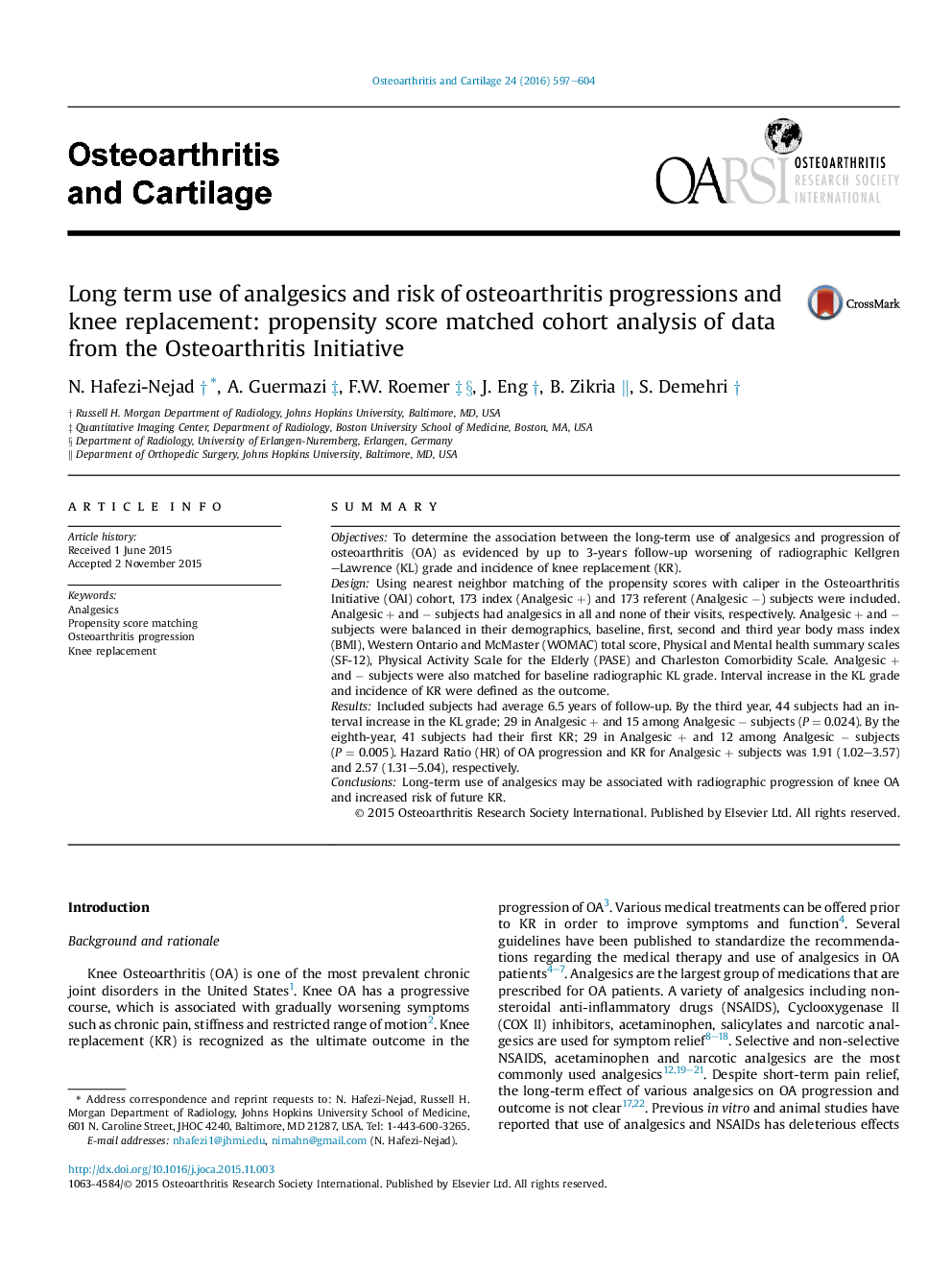| Article ID | Journal | Published Year | Pages | File Type |
|---|---|---|---|---|
| 6124591 | Osteoarthritis and Cartilage | 2016 | 8 Pages |
SummaryObjectivesTo determine the association between the long-term use of analgesics and progression of osteoarthritis (OA) as evidenced by up to 3-years follow-up worsening of radiographic Kellgren-Lawrence (KL) grade and incidence of knee replacement (KR).DesignUsing nearest neighbor matching of the propensity scores with caliper in the Osteoarthritis Initiative (OAI) cohort, 173 index (Analgesic +) and 173 referent (Analgesic â) subjects were included. Analgesic + and â subjects had analgesics in all and none of their visits, respectively. Analgesic + and â subjects were balanced in their demographics, baseline, first, second and third year body mass index (BMI), Western Ontario and McMaster (WOMAC) total score, Physical and Mental health summary scales (SF-12), Physical Activity Scale for the Elderly (PASE) and Charleston Comorbidity Scale. Analgesic + and â subjects were also matched for baseline radiographic KL grade. Interval increase in the KL grade and incidence of KR were defined as the outcome.ResultsIncluded subjects had average 6.5 years of follow-up. By the third year, 44 subjects had an interval increase in the KL grade; 29 in Analgesic + and 15 among Analgesic â subjects (P = 0.024). By the eighth-year, 41 subjects had their first KR; 29 in Analgesic + and 12 among Analgesic â subjects (P = 0.005). Hazard Ratio (HR) of OA progression and KR for Analgesic + subjects was 1.91 (1.02-3.57) and 2.57 (1.31-5.04), respectively.ConclusionsLong-term use of analgesics may be associated with radiographic progression of knee OA and increased risk of future KR.
